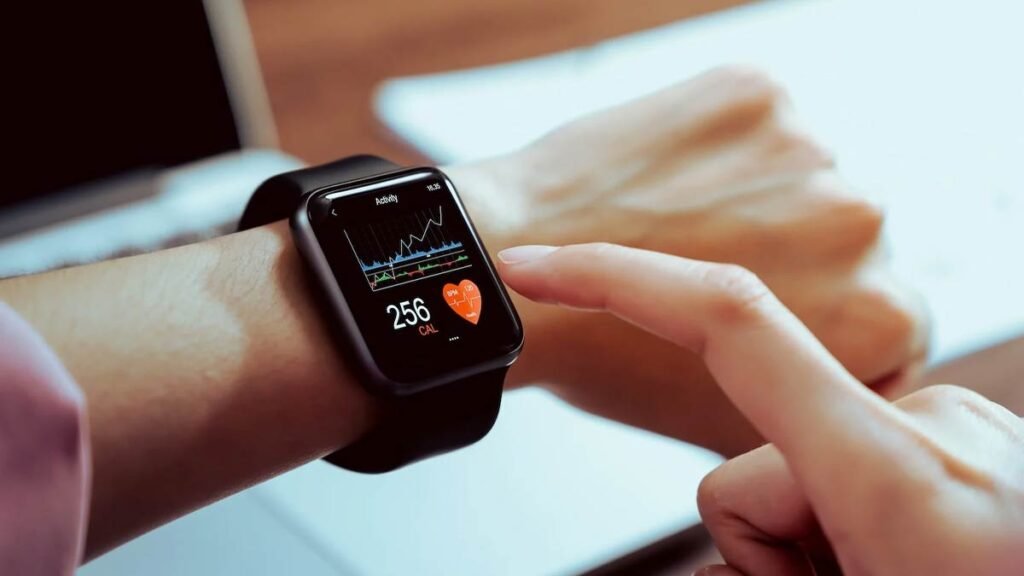Ten years ago, smartwatches were mostly step-counters and calorie trackers. Fast-forward to 2025, and these devices have become mini health companions on our wrists. From detecting atrial fibrillation to screening for sleep apnea, wearables now influence how Americans sleep, move, and even visit their doctors.
The real story? Wearable health tech has shifted from being a trendy fitness tool to a trusted part of clinical care — and that’s changing daily wellness in ways we couldn’t imagine just a few years ago.
The Market Has Matured — And It Shows in Daily Life
The global wearable healthcare market has reached around $45 billion in 2025, a figure confirmed by multiple research firms. That surge signals one thing: consumers and health systems alike are investing. More insurers now reimburse select devices, employers hand them out as part of wellness programs, and hospitals are integrating patient data directly from wearables into electronic health records.
What this means for you: it’s no longer unusual for your cardiologist to ask, “Can you share your Apple Watch data from the last month?”
From Lifestyle Gadget to Medical Device
The U.S. Food and Drug Administration (FDA) has been critical in this transition. Instead of treating wearables as toys, the FDA has issued clear digital health guidelines and approved several features for clinical use.
One milestone was when the Apple Watch AFib history feature became the first digital health tool qualified under the FDA’s Medical Device Development Tool (MDDT) program. That opened the door for other innovations, giving tech companies a structured path to prove their features are reliable enough for doctors and patients.
Recent FDA-Cleared Features in 2025
- Blood pressure notifications (Apple Watch Series 11 and Ultra 3, September 2025)
- Sleep apnea detection (Samsung Galaxy Watch series, now expanded globally)
- Irregular heart rhythm monitoring (Apple, Fitbit, others)
These aren’t just nice-to-have features — they’re potentially life-saving alerts that can prompt users to seek medical care earlier.
Real-World Impact: How Wearables Change Routines
Let’s make this real. Imagine two different people:
- Maya, 42, working mom – She receives a nightly sleep report from her smartwatch. After repeated “possible apnea” alerts, she consults her doctor, who orders a sleep study. She gets diagnosed and treated months earlier than she otherwise would have.
- David, 60, heart patient – His Apple Watch alerts him to irregular rhythms during a morning walk. Instead of ignoring mild fatigue, he visits his cardiologist. Trend reports confirm episodes of AFib, leading to timely treatment adjustments.
These small nudges transform how ordinary people manage their health.
Why This Matters for Wellness in 2025
Wearables provide three major advantages for daily wellness:
- Earlier Detection – Subtle patterns like irregular heartbeats, rising blood pressure, or disrupted sleep can be flagged days or weeks before a medical crisis.
- Behavior Nudges – Daily reminders to stand, hydrate, breathe, or rest improve long-term habits without feeling overwhelming.
- Remote Continuity of Care – Doctors get data between appointments, reducing unnecessary visits while ensuring at-risk patients get seen faster.
Quick Snapshot: Who Benefits Most
| Group | Benefits of Wearable Health Tech (2025) |
|---|---|
| Chronic patients | Continuous monitoring (AFib, hypertension) helps doctors personalize medication. |
| Busy professionals | Passive alerts encourage earlier checkups without extra appointments. |
| Seniors | Fall detection + heart monitoring reduce risks of late intervention. |
| Researchers & Public Health | Aggregated data supports faster disease surveillance and population-health insights. |
The Cautionary Side: What Users Must Remember
As promising as wearables are, they’re not perfect.
- False positives – Not every alert equals a diagnosis. Over-alerts can create unnecessary anxiety.
- Equity gap – Devices often cost hundreds of dollars, and not all communities have equal access.
- Data privacy – Sharing sensitive health metrics raises questions about HIPAA compliance and third-party access.
The American Medical Association has urged patients to treat wearables as “decision-support tools, not diagnostic replacements.” That perspective helps balance enthusiasm with caution.
Practical Tips for Daily Users
If you’re using a health wearable in 2025, here’s how to make it truly useful:
- Check the feature status – Is it FDA-cleared or just a wellness tool? That changes how doctors treat the data.
- Share long-term trends – Clinicians prefer 2-week rhythm logs over single screenshots.
- Secure your data – Enable privacy settings and know where your health info goes.
- Act on alerts wisely – Use them as prompts to consult a professional, not as self-diagnosis.
Expert Voices
Dr. Karen Li, a cardiologist at a New York medical center, explained in a 2025 interview:

“We’ve had patients come in because their watch told them something was off — and it turned out to be right. It doesn’t replace my role, but it definitely makes my job easier and their outcomes better.”
Experts agree: wearable data isn’t flawless, but it’s a valuable starting point for conversations that previously never happened.
The Road Ahead
The next phase of wearables will likely focus on integration and equity:
- Insurers offering subsidies to widen access
- Devices syncing seamlessly with telehealth platforms
- Stronger data-privacy protections to earn consumer trust
By 2030, analysts predict these tools won’t just be “wearables” — they’ll be a quiet but essential part of the U.S. healthcare infrastructure.
Bottom Line
In 2025, wearable health tech in the US has moved far beyond step counts. With FDA-cleared features, real-world case studies, and stronger integration into care systems, wearables now shape how Americans detect illness, manage conditions, and build healthier daily routines.
They aren’t magic, but they’re powerful allies in wellness — provided we use them wisely, protect our data, and remember that human doctors still have the final say.


